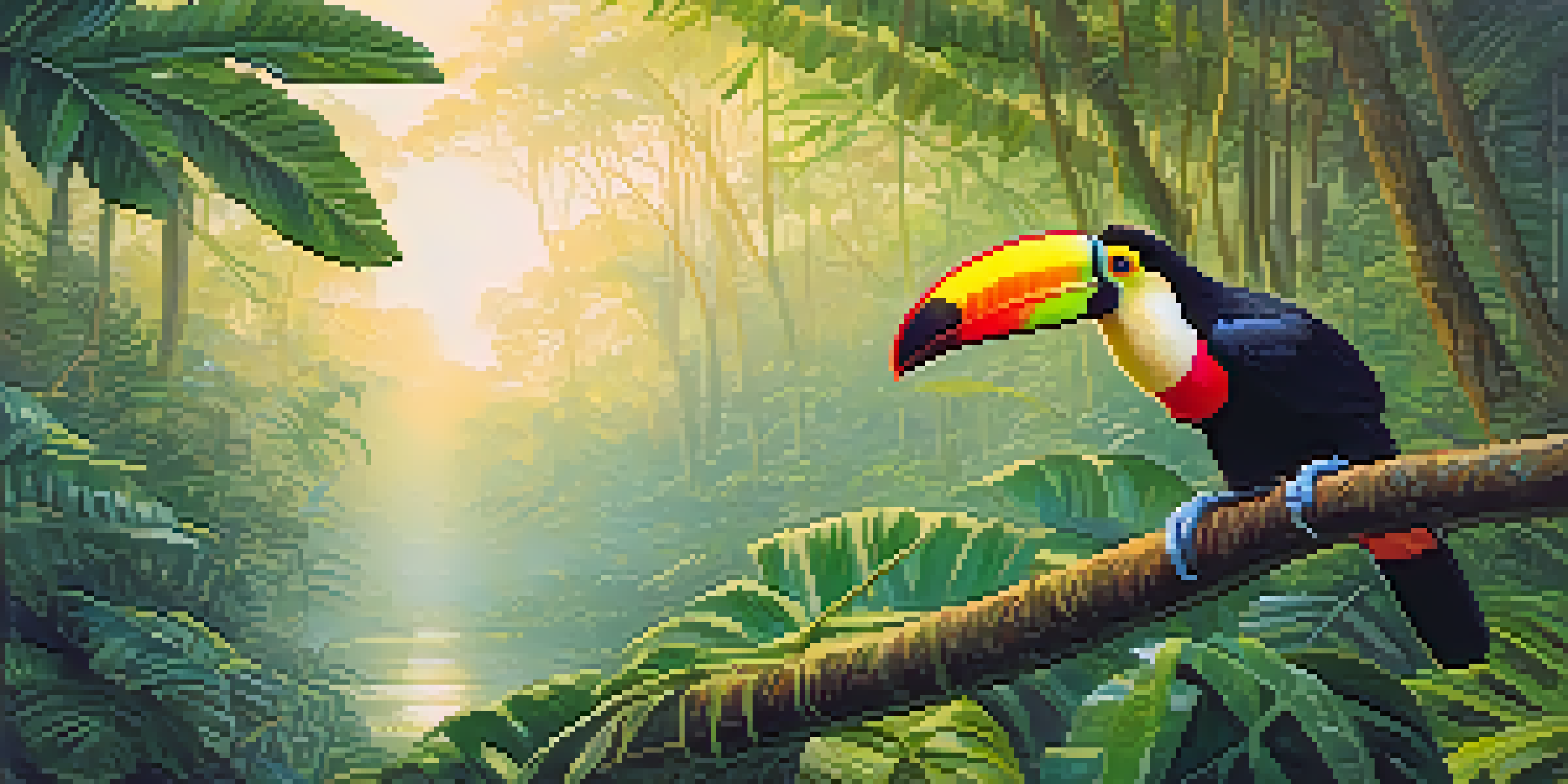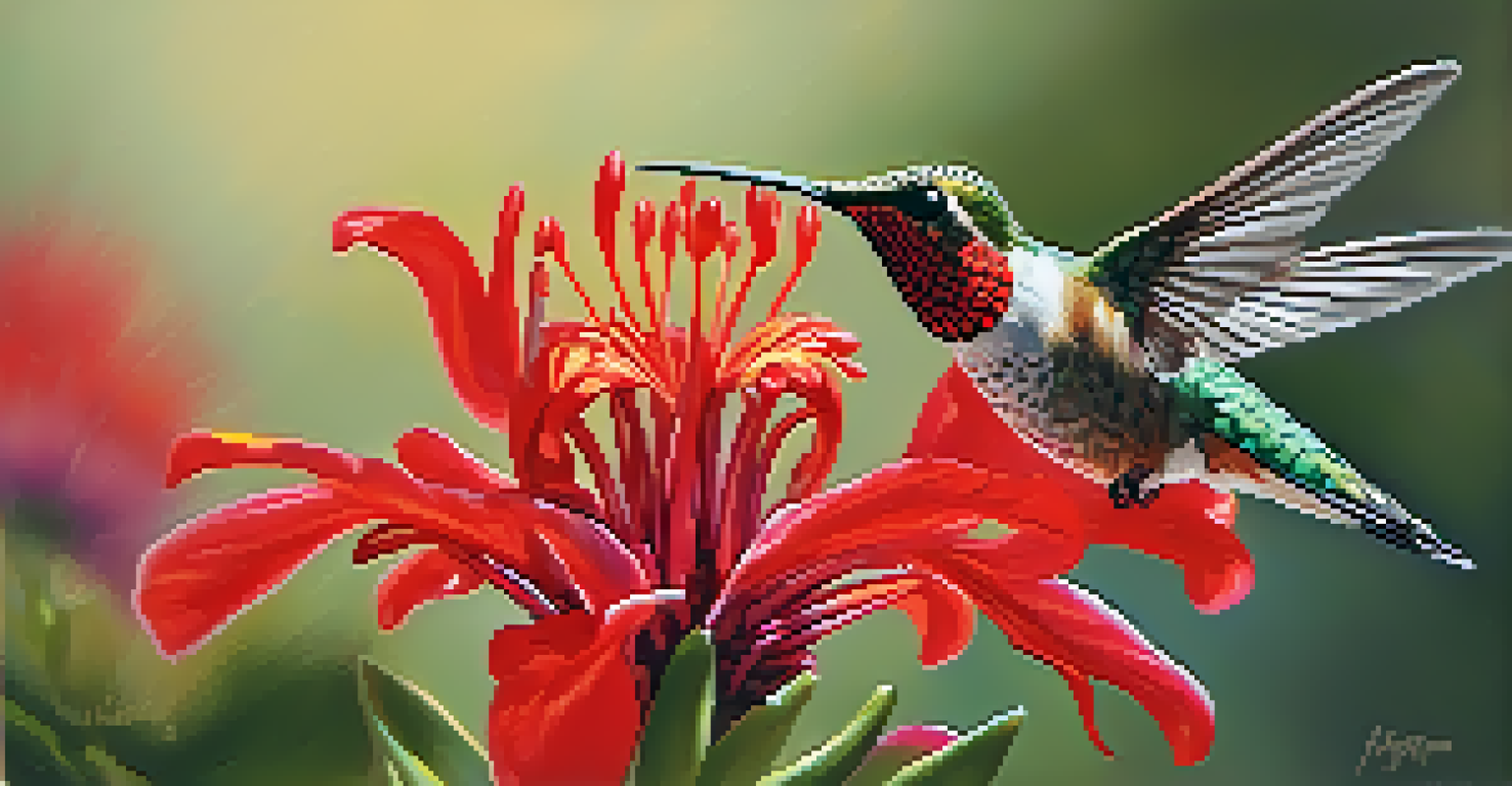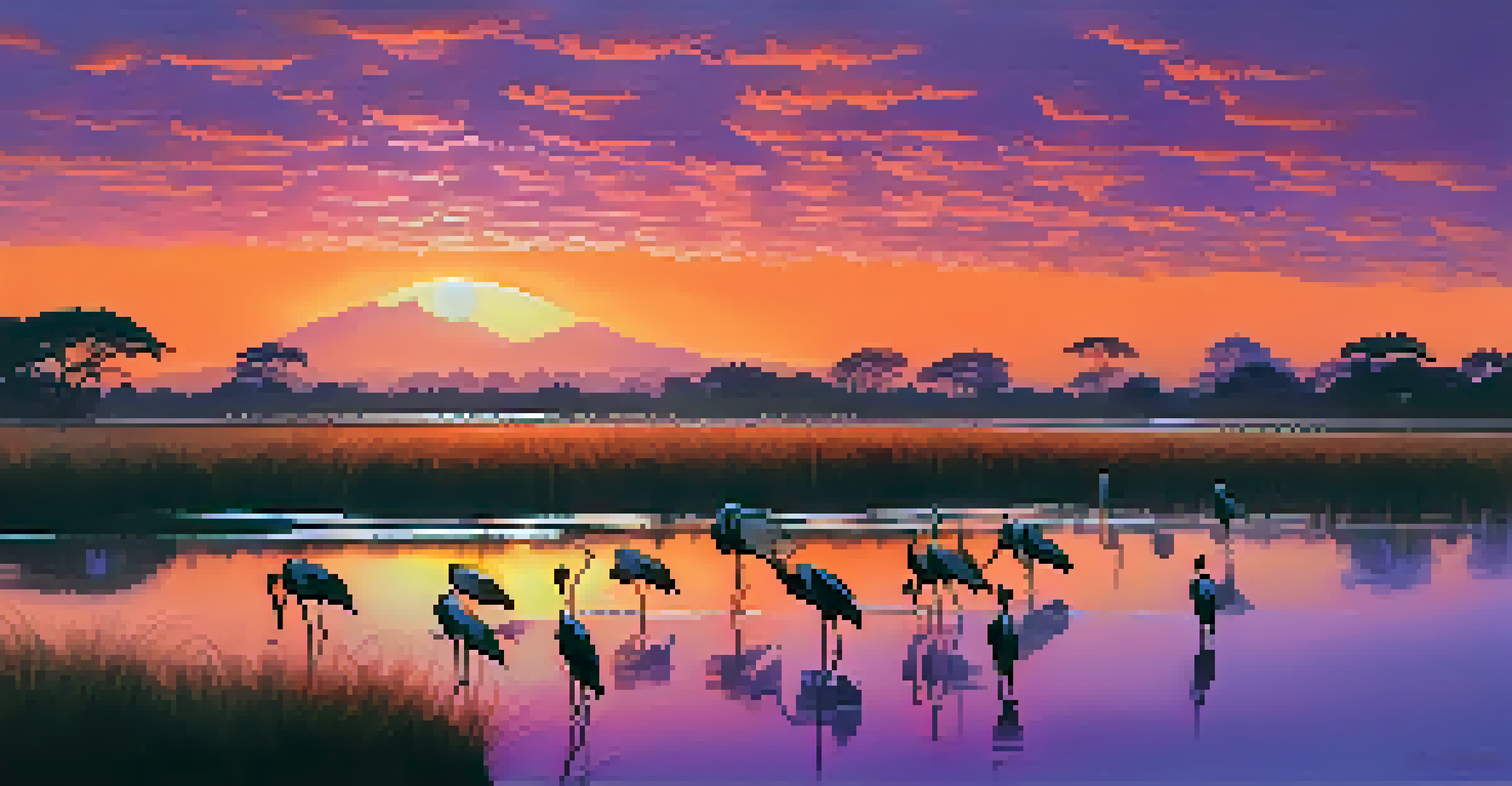Birdwatching Photography Tips for Capturing Brazil's Birds

Choosing the Right Equipment for Bird Photography
When it comes to birdwatching photography, the right equipment can make a world of difference. A good camera with a fast autofocus system is essential, as birds can be quick and unpredictable. Additionally, a telephoto lens, ideally between 300mm and 600mm, allows you to capture stunning close-ups without disturbing the birds.
In every walk with nature one receives far more than he seeks.
Consider using a tripod or a monopod to stabilize your shots, especially in low light conditions or when using a heavier lens. This will help prevent unwanted blur and ensure your images are as crisp as possible. Don't forget to bring extra batteries and memory cards; you never know when you might encounter an incredible sight!
Lastly, familiarize yourself with your camera settings before heading out. Understanding how to adjust ISO, shutter speed, and aperture will empower you to react quickly in the field, allowing you to seize those fleeting moments of avian beauty.
Understanding Bird Behavior for Better Shots
To capture stunning images of Brazil's birds, it's beneficial to understand their behavior. Different species have unique habits, and knowing these can help you predict their movements. For example, some birds are more active at dawn or dusk, while others may perch in specific areas throughout the day.

Take the time to observe the birds in their natural habitats. This not only increases your chances of getting the perfect shot but also enhances your appreciation for their lives. Patience is key; sometimes, waiting quietly for a bird to return to a favored spot can yield remarkable results.
Essential Gear for Bird Photography
A good camera with a fast autofocus and a telephoto lens between 300mm and 600mm is crucial for capturing birds effectively.
Moreover, learning about the feeding habits of the species you're photographing can help you choose the best locations. Many birds are drawn to certain types of flowers or fruits, so positioning yourself near these can lead to spectacular photographs.
Optimal Locations for Birdwatching in Brazil
Brazil is a birdwatcher's paradise, boasting diverse ecosystems like the Amazon rainforest, Pantanal wetlands, and Atlantic Forest. Each of these regions hosts unique bird species, so selecting the right location is crucial. For instance, the Pantanal is renowned for its abundance of wildlife, including the striking hyacinth macaw and jabiru stork.
The best thing about photography is that it never stops teaching you.
Consider visiting national parks and reserves, as they often provide guided tours and well-maintained trails. Places like the Iguazu National Park not only offer breathtaking views of waterfalls but also a rich avian population. Joining birdwatching groups or local tours can enhance your experience, as local experts often know the best spots.
Don't overlook urban areas either! Cities like São Paulo have parks that attract various bird species, making them perfect for quick photography sessions without venturing far from civilization.
Timing Your Photography for the Best Light
Lighting can make or break your bird photographs, so timing is everything. The golden hours—early morning and late afternoon—often provide the softest, most flattering light. During these times, the sun is lower in the sky, casting a warm glow that enhances colors and reduces harsh shadows.
Additionally, shooting during overcast days can soften the light and reduce glare, allowing for more even exposure. This is particularly beneficial when photographing birds with shiny feathers or bright colors, as it can help avoid washed-out images.
Understanding Bird Behavior
Observing different bird species' habits and feeding patterns enhances your chances of capturing stunning photographs.
Plan your outings around these optimal lighting conditions. Not only will this improve the quality of your photographs, but it will also enhance your overall birdwatching experience, allowing you to appreciate the beauty of nature more fully.
Mastering Composition Techniques in Bird Photography
Composition is key to creating visually appealing bird photographs. The rule of thirds is a great starting point; imagine dividing your frame into a grid and position your subject along these lines for a more dynamic image. This technique helps to draw the viewer's eye and creates a sense of balance in your photos.
Incorporating elements of the environment, like branches or flowers, can add depth and context to your shots. For example, framing a bird perched on a colorful flower can create a stunning image that tells a story about its habitat.
Experiment with different angles and perspectives. Shooting from below or above can offer a fresh take on your subject, while close-ups can showcase intricate details like feathers or expressions that tell a deeper story about the bird.
Using Patience and Stealth in the Field
Birdwatching photography requires a good dose of patience and stealth. Birds are naturally wary of humans, so maintaining a low profile is essential. Move slowly and quietly, and consider wearing neutral-colored clothing that blends into the environment to avoid startling your feathered friends.
It can be beneficial to set up in a location where you’ve seen birds before and wait for them to come to you. This might mean sitting still and observing your surroundings for an extended period. Bring along a comfortable chair or a blanket to make your wait more enjoyable.
Optimal Lighting for Great Shots
Timing your photography during golden hours or overcast days significantly improves the quality and appeal of your bird photos.
Using blinds or natural cover can also help you get closer without disturbing the birds. Whether it’s a bush, tree, or a specially designed bird blind, utilizing these elements will increase your chances of capturing those intimate moments.
Post-Processing Tips for Stunning Bird Photos
Once you've captured your bird photographs, the next step is post-processing to enhance your images. Basic editing software can help you adjust exposure, contrast, and sharpness to bring your photos to life. Even a few tweaks can dramatically alter the mood and clarity of your shots.
Don't be afraid to crop your images to focus on the bird, especially if you couldn’t get as close as you wanted. A well-composed crop can transform a good photo into a great one. Just remember to maintain the quality—avoid excessive cropping that can lead to pixelation.

Finally, consider adding a subtle vignette effect to draw attention to the subject. This small touch can create a more polished look and help your images stand out, whether you’re sharing them online or printing them for display.